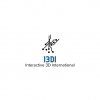Hi all,
I've been in the process of creating a RTS game in the style of Supreme Commander (But with much bigger levels) for a while now, and whilst I've made good progress writing my own engine from scratch it has become clear that the scale of the project is way too big for one person to do in their spare time (Especially as I work fairly long hours in my day job and I like to spend as much time with my family as possible.).
So, my plan B is to look at possibly using one of the existing Game Engines out there such as the Unreal Engine, Unity etc.
I've done a couple of Udemy tutorials for Unreal, which have been quite useful, however I see that there appears to be a lot more tutorials and information out there for Unity, so I was wondering if I've backed the wrong horse.
The key feature that I need from the engine is the ability to show massive terrains, and by massive I'm not talking 5km x 5km, I'm talking more like 1000+km x 1000+km square! And unlike an FPS type game that can load in terrain segments in tiles based on your current location I need the ability to zoom the camera right out so that I can see the entire 1000km x 1000km map all at once (Although the level of detail can obviously be much lower as you zoom out). If you've played Supreme Commander then you'll be familiar with this style of "strategic zoom".
I already have this working in my own game engine by generating the terrain in realtime on the GPU using multiple octaves of Perlin noise, which has the added bonus of allowing me to smoothly tessellate the level of detail as I zoom in and out (In my engine the terrain is 4000km x 4000km).
So the question is, what sort of terrain capabilities do the big game engines support? I'm guessing none will support realtime generated terrains?
If not then whats the maximum size pre-generated terrains that they can support? And what LOD capabilities do they have for when you zoom in/out?
Thanks in advance
Ben
P.S. I've tried doing some of my own research but all I seem to find is old forum threads that say things like "there are expected to be big improvements coming to the terrain capabilities in Unreal 4.8", which is now old and I've not seen any confirmation or details about if big improvements did indeed happen.







